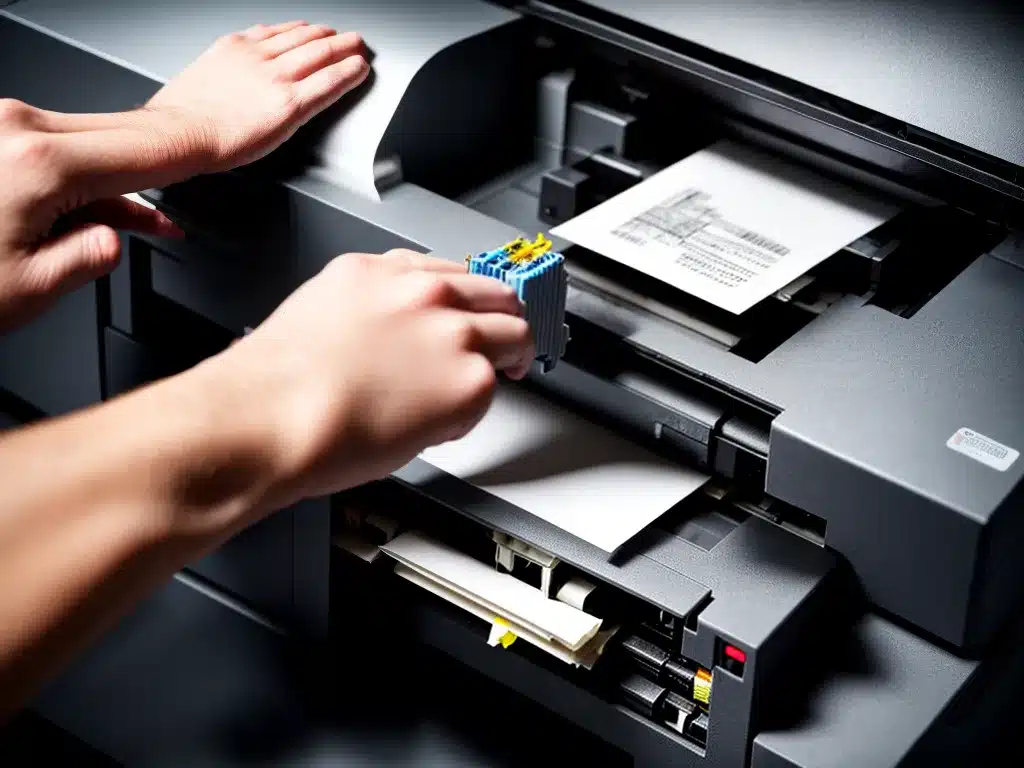Introduction
As someone who relies on my printer for work and personal use, I understand how frustrating printer issues can be. When my printer stops working properly, I want to get it fixed as quickly as possible. The good news is that many common printer problems stem from just a few hardware issues that can often be resolved without a trip to the repair shop. In this article, I’ll share the most common hardware problems I’ve encountered over the years and provide tips to diagnose and fix them yourself.
Paper Jams
Paper jams are one of the most common printer hardware problems I’ve dealt with. Here are some of the causes I’ve discovered and how I fixed them:
Dust Buildup
Over time, dust can accumulate along the paper path and cause feeding issues. To fix: power off the printer, open it up, and use compressed air to blow out any dust buildup. Be sure to wear eye protection when doing this.
Worn Rollers
The rollers that pull paper through the printer can become worn and slippery. To fix: order replacement rollers online and swap out the worn ones. Most printers make this a straightforward process.
Misaligned Sensors
There are sensors that detect when paper passes through. If these get bumped out of alignment, it can cause erroneous jam detections. To fix: open the printer and check that the sensors are positioned correctly. Realign if needed.
Bent Trays
If the input or output trays get bent, it can skew paper feeding. To fix: try gently bending the trays back into shape. If that doesn’t work, replace warped trays.
Feed Problems
Issues with paper feeding properly are another common occurrence. Here are some fixes I’ve learned:
Clean the Rollers
Paper dust, ink, and debris buildup on the rollers can make them slippery. To fix: clean the rollers with isopropyl alcohol and a lint-free cloth. Spin the rollers manually while cleaning to fully remove buildup.
Separate the Sheets
Paper sheets can stick together if unused for prolonged periods, particularly in humid environments. Fanning and separating the sheets before loading sometimes helps prevent misfeeds.
Update the Firmware
Outdated printer firmware can cause glitches with feed mechanisms. To fix: download and install the latest firmware update for your printer model. Keeping firmware up to date prevents many issues.
Replace the Pickup Roller
With heavy use over time, the rubber pickup roller that pulls in paper can become hard, smooth, and prone to slippage. To fix: order a replacement pickup roller and swap it out.
Smudged or Light Print
Problems with print quality often come down to the print heads. Here are some troubleshooting tips:
Clean the Print Heads
Built up dried ink, dust, and debris on the print heads can block ink nozzles and cause issues. To fix: clean the print heads by running the printer’s built-in cleaning utility. Or remove the print heads and manually clean them.
Align the Print Heads
The print heads can shift slightly out of alignment over time. To fix: run the printer’s alignment utility, which prints a test pattern and adjusts alignment as needed.
Replace Old Print Heads
Heavily used print heads eventually wear out. To fix: replace old print heads with new ones. Check your printer model’s documentation for details.
Check Ink Levels
Low ink or empty cartridges can cause fading and missing colors. To fix: replace empty ink cartridges. Also run cleaning cycles to prime the new cartridges.
Conclusion
While printer issues can be frustrating, many common hardware problems like paper jams, feed problems, and print quality can be fixed yourself. With some basic maintenance and replaced parts, you can often get your printer working again without an expensive service call. Knowing the right steps to diagnose and troubleshoot printer hardware will save you time and money.













